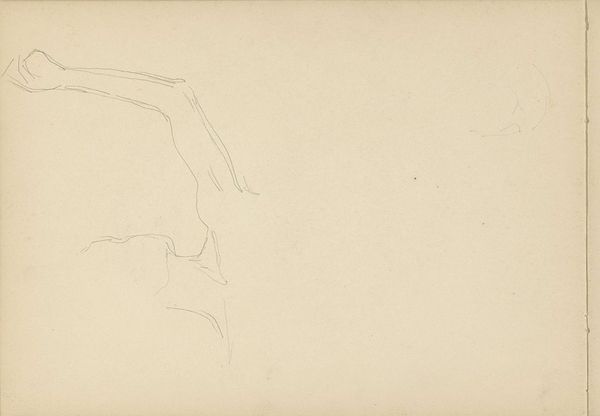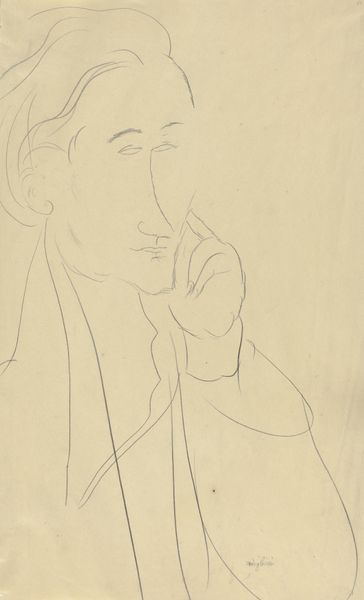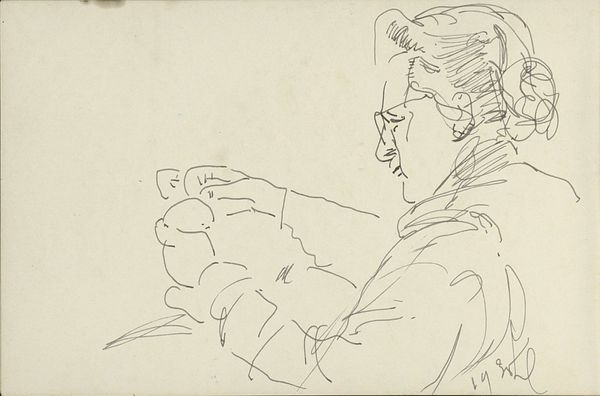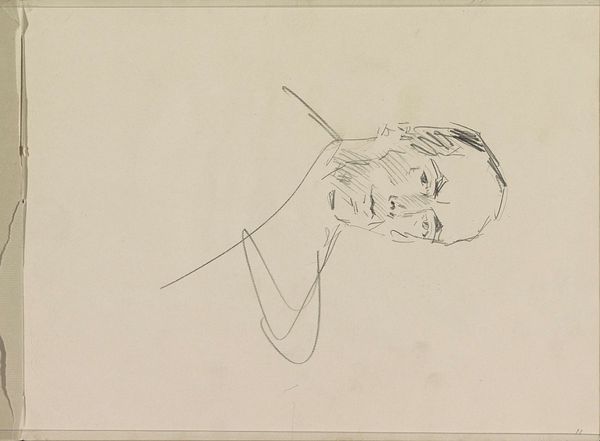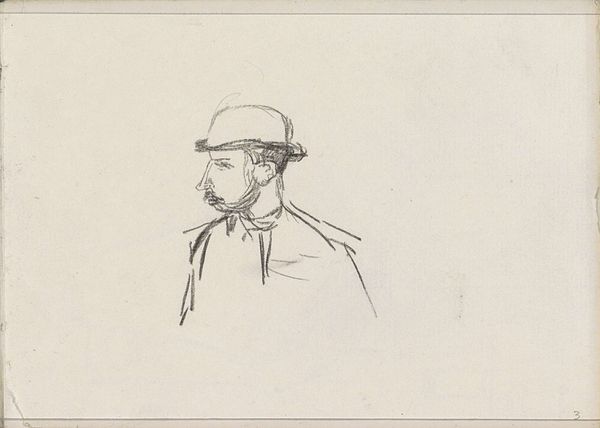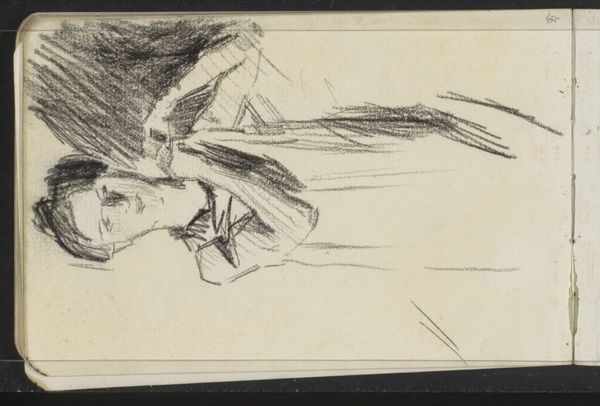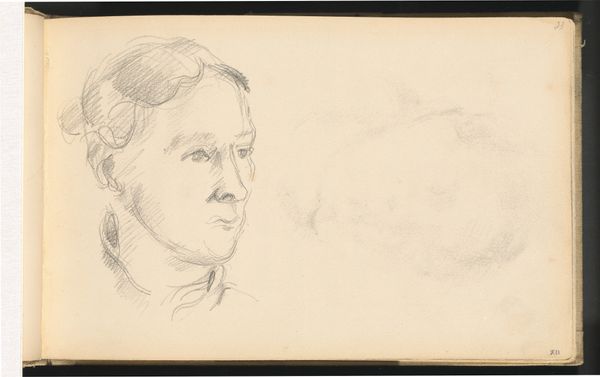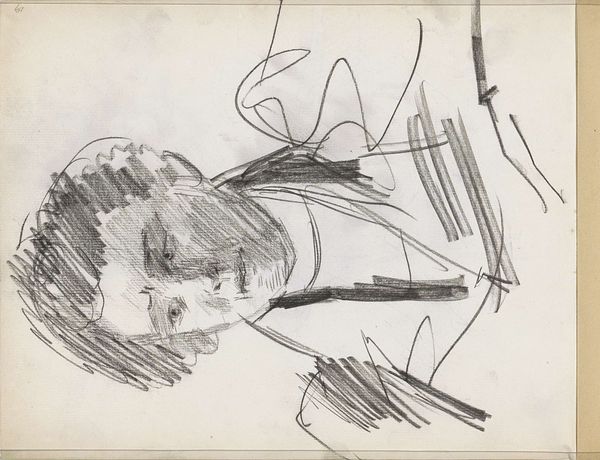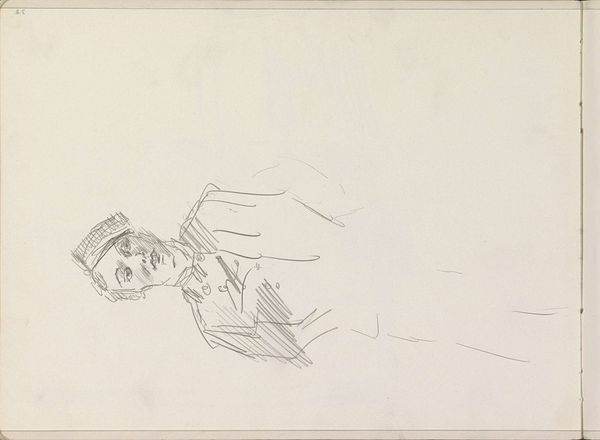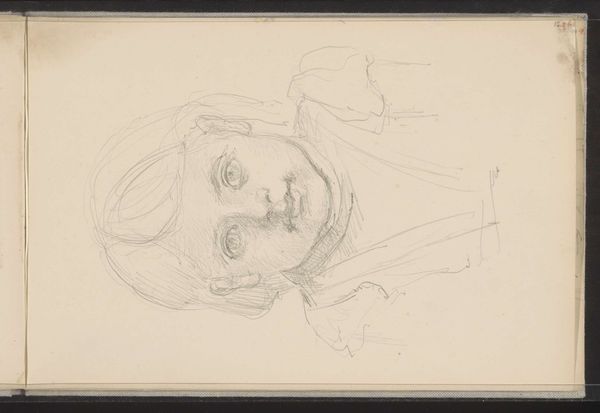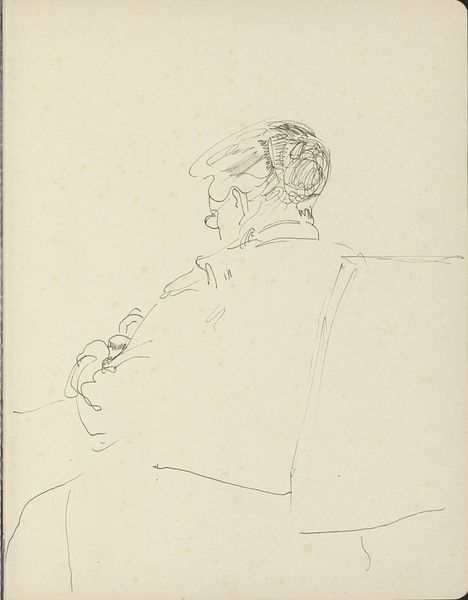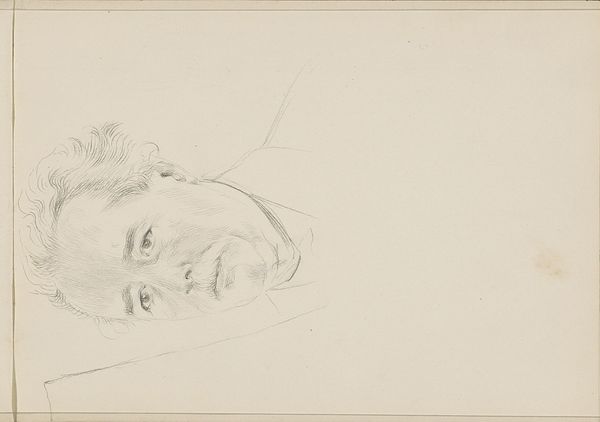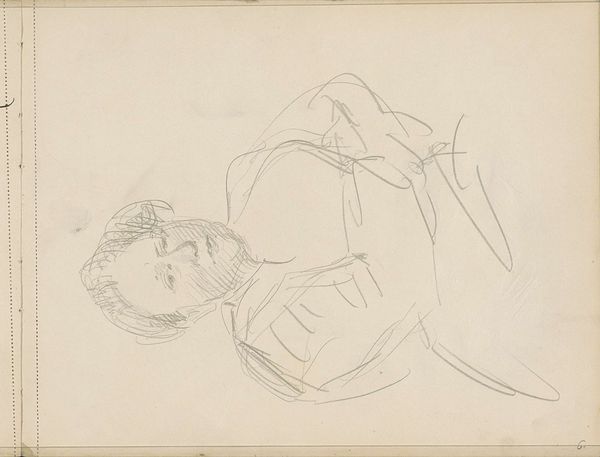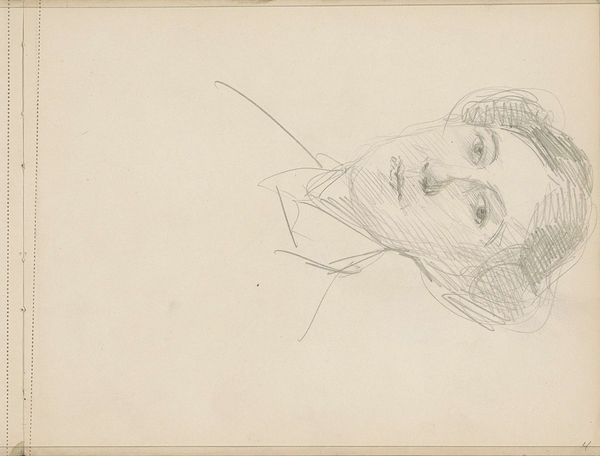
Kop van een vrouw, vermoedelijk Joanne Lion Cachet-Cordes c. 1930 - 1938
0:00
0:00
drawing, pencil
#
portrait
#
drawing
#
pencil sketch
#
pencil
#
pencil work
#
modernism
#
realism
Copyright: Rijks Museum: Open Domain
Editor: Here we have Carel Adolph Lion Cachet’s pencil drawing, "Kop van een vrouw, vermoedelijk Joanne Lion Cachet-Cordes," created sometime between 1930 and 1938. The simplicity is striking. What stories do you think this image holds? Curator: The sketch’s seeming simplicity actually invites us to consider the complexities of representation, particularly the relationship between artist and subject, which here is complicated by family ties, given it is believed to be the artist's wife. How might their power dynamics and social positions have informed this image, either consciously or unconsciously? What can the gaze, the soft rendering of the features, and the partial sketch tell us about intimacy, identity, and visibility during that period? Editor: That’s a perspective I hadn’t considered. It makes me wonder about her experience as the subject, as well as the absence of information and context in the artwork itself. Does the 'modernist' categorization play into this at all? Curator: Absolutely. Modernism often challenged traditional portraiture by exploring subjective perspectives. We can examine the way Cachet breaks from conventional depictions, and consider this partial rendering of a women in contrast to traditional oil portraits that sought to enshrine power and status. Editor: So, rather than seeing a simple sketch, we can use it as a lens to question power dynamics within relationships, representation in portraiture, and women's roles during the modernist period? Curator: Precisely! It demonstrates how art serves as a space for social commentary, urging us to engage with broader cultural issues, inviting us to question and examine representation. Editor: That’s a powerful takeaway; thank you for illuminating those deeper layers. Curator: And thank you for the insightful questions; it’s in these dialogues that art truly comes alive!
Comments
No comments
Be the first to comment and join the conversation on the ultimate creative platform.
